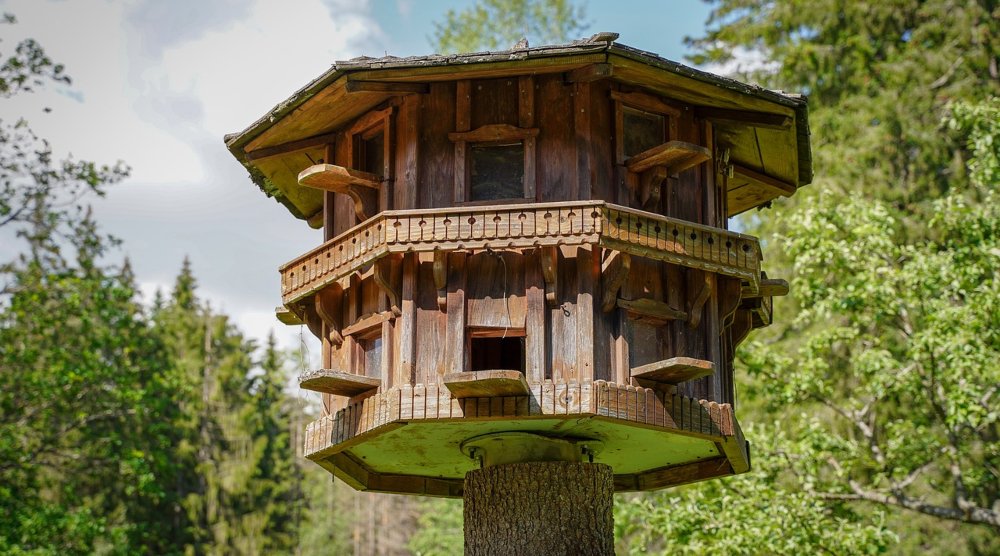When it comes to the affordable housing crisis, maybe the way forward is the way back — to earlier forms of housing that once worked, particularly for starter housing for young people. Here are a few ideas that address affordability, starter homes, and neighborhood compatability.
Boarding Houses. These used to be insanely popular in American cities, before suburban flight associated them with poverty. Boarding houses make use of unused bedrooms, provide meals and laundry, benefit from owners living on the premises, and force a kind of socializing at the dinner table. Washington laws now allow more unrelated persons to live in the same house. Maybe a tax incentive would do the trick, along with requirements to provide off-street parking in the back yard. One advantage: you can rent a room for short-term.
Dormitories. Young people will have fond memories of dorm life in college, so why not provide incentives to build some small ones? They keep costs down by providing some common rooms: kitchens, dining, library, rooms for pool and ping pong, common work and workout rooms for meeting interesting neighbors. Maybe an equivalent of a dorm mother would keep down the noise, provide career advice, and admonish good behavior.
Triple-Deckers. Another good old idea which swept the East and Midwest. An up-and-coming family gets a bank loan to build a triple-deck apartment house (one dwelling per floor). The building owner occupies one level and earns rent from the other two levels. Thus people subsidized their starter-housing expenses and made serious deposits in the “wealth bank.” The houses fit right in with single-family houses, reward the enterprising, and usually require the builder to stay in the triple-decker for a minimum of five years. The “super” is right downstairs. Maybe a pooled bank fund could fund the investment, with real property for collateral.
SROs. Single Room Occupancy hotels used to be where the poor in Seattle found rooms and company at bargain rates. They were build in defiance of fire regulations, which is why they were banned after the Ozark Hotel fire in 1970, but such regulations could be modernized, particularly in fixing up old hotels and commercial properties. The old custom of a bathroom down the hall is probably obsolete, but common rooms for kitchens and dining make economic and social sense.
Anhalt Apartments. Fred Anhalt specialized in handsome apartment complexes often built around an interior garden. Again, these complexes are good neighbors in single family zones, much better than milk carton boxy buildings. The interior gardens preserve trees, attract birds, reward gardeners, and build up resale value. They would be expensive to build new ones, since they don’t “max-out” land value, so subsidies would be needed. Maybe if neighbors helped to build them and finance them, they would earn usage rights for the gardens.
Apartment Hotels. These are apartments with hotel-like features such as a dining room, libraries, and social rooms for entertaining. Some are famous, such as the Dakota Hotel in Manhattan (home of Yoko Ono), and some are once-famous and now converted to conventional use (such as the Exeter House at 8th and Seneca on First Hill). They saved money by being furnished, smaller rooms. And they created lifetime friends who bond at these apartment hotels and stay in touch for years. An excellent idea for converting small hotels.
Discover more from Post Alley
Subscribe to get the latest posts sent to your email.

Thanks so much for this. In San Francisco, for many years, the Knob Hill Women’s Residence Club was just such a place, and I had been wondering what happened to this option (well-known at one time) for people just moving to town. One paid by the week, had breakfast provided in a large dining room, and had her own hotel-like room on a long hallway, of which there were several floors.
I had a different alt housing experience. My single mom and us two kids rented a house with another family. These were big, old houses with 4+ bedrooms, and there were bunkbeds and lots of kids running around. It helped with childcare and just more support for a single mom.
This one family per one unit housing model we have today is so rigid and misses out on a lot of community. It makes so much sense to build in flexibility and support into housing. I hope policymakers know enough to get out of the way and support approaches like the author lists here, and all the other ways people living together make it work.
The other positive element to this solution, David, is the possibility for comingling generations….which would enrich the family experience. So many kids are growing up with inadequate parenting, for a variety of reasons. The presence of a benevolent, older neighbor down the hall, even on the periphery of a child’s experience, could make a very strong contribution to the child’s life. As well as enrich the elder’s feeling of community. Sometimes, the most forward-looking solutions are rooted in past behaviors. What a great article!